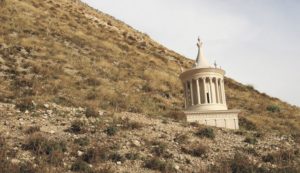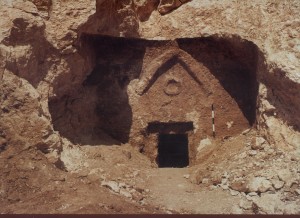King Herod’s Tomb “debunked”?

In 2007, I was having coffee with the late Professor Ehud Netzer prior to his announcement that his lifelong dream of finding King Herod’s tomb had been realized. He told me about his finding and we discussed a possible documentary film. I remember saying to him that his argument was compelling but…was it really convincing. I joked that he’s lucky that Herod was not Jesus. What I meant by this is that although Ehud Netzer found a tomb in Herodium, there’s actually nothing to prove that it belonged to King Herod. In contrast, in Talpiot in 1980, archaeologists found what is clearly Jesus’ tomb – complete with his name inscribed on his bone box and several members of his family buried nearby – and yet the world refuses to face the facts and deal with the discovery (see my co-authored book The Jesus Discovery). So in one place you have no evidence but universal approval, and in the other place you have an abundance of evidence and a near total rejection by Christians and archaeologists.
Ehud Netzer died tragically in a fall at Herodium in 2010. He was a great archaeologist and a true gentleman. I wanted to believe that he had found Herod’s tomb. Given that he also talked to me about making a documentary film about it, I was motivated to believe it. But the fact is – and I’ve written about this – that the connection between the tomb discovered at Herodium and King Herod the Great is unconvincing.
Until now, no academic challenged Ehud Netzer’s claims. Quite the contrary, there was universal applause from everywhere. More than this, the Israel Museum has put on a multi-million dollar exhibit – in the tradition of the British Museum – on the find. But what a disappointment it is. You walk through all sorts of background exhibits before getting to the reconstructed tomb itself. And when you get to it, what do you find? You discover that there was almost nothing left intact of the original tomb. A bunch of stone coffins were found in pieces and lovingly glued together by the Israel Museum. But the coffins are surprisingly plain and none of them have an inscription connecting them to any individual that we would know from history. No intact tomb, no intact coffins, no inscriptions – nada!
Now, finally, Professors Patrich and Arubas have decided to point out that the emperor has no clothes. The tomb is too small, they say, the coffin material is too plain, the design is wrong and the axis is wrong. I’m sure some will defend the find if only for the Israel Museum to save face. But, at the end of the day, Netzer’s find does not fit with what we know of Herod the Great.

Maybe the Israel Museum should now focus on the Jesus Family Tomb. Maybe their next exhibit should be on that tomb. After all, the tomb was found intact, the ossuaries (bone boxes) were found intact and there is an abundance of names inscribed on the ossuaries. More than this, 60 meters nearby is another tomb and on two of its ossuaries you have the earliest symbols of Christianity. What a great exhibit that would make – the lost tomb of Jesus. But don’t hold your breath. It’s not going to happen. It’s an “inconvenient truth” best ignored by the Church and various theologically motivated academics. I challenge the Israel Museum to create a “Jesus Discovery” exhibit. After all, you don’t have to glue ossuaries together and you don’t have to speculate as to who is buried in the tomb – it says so clearly on the box: “Jesus, son of Joseph”.
Click here to see my recent article “Fernando Torres, Jews and Christopher Columbus” on The Times of Israel

